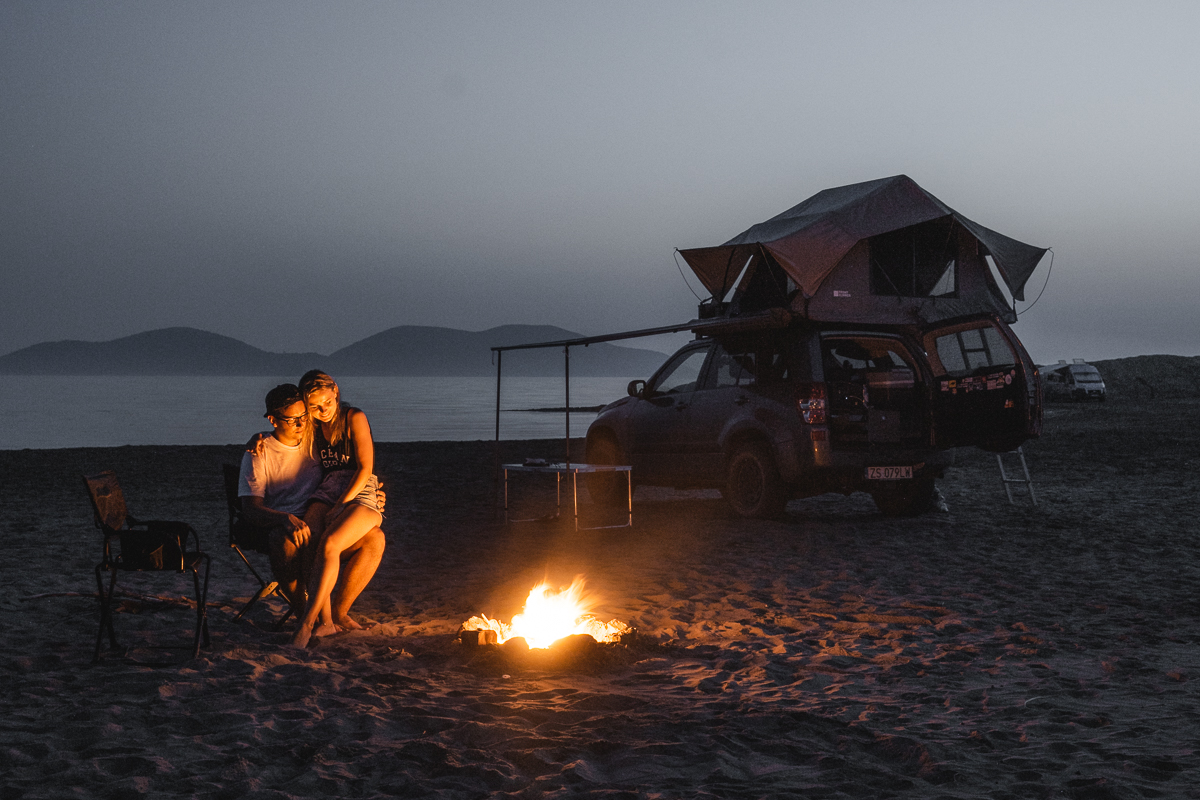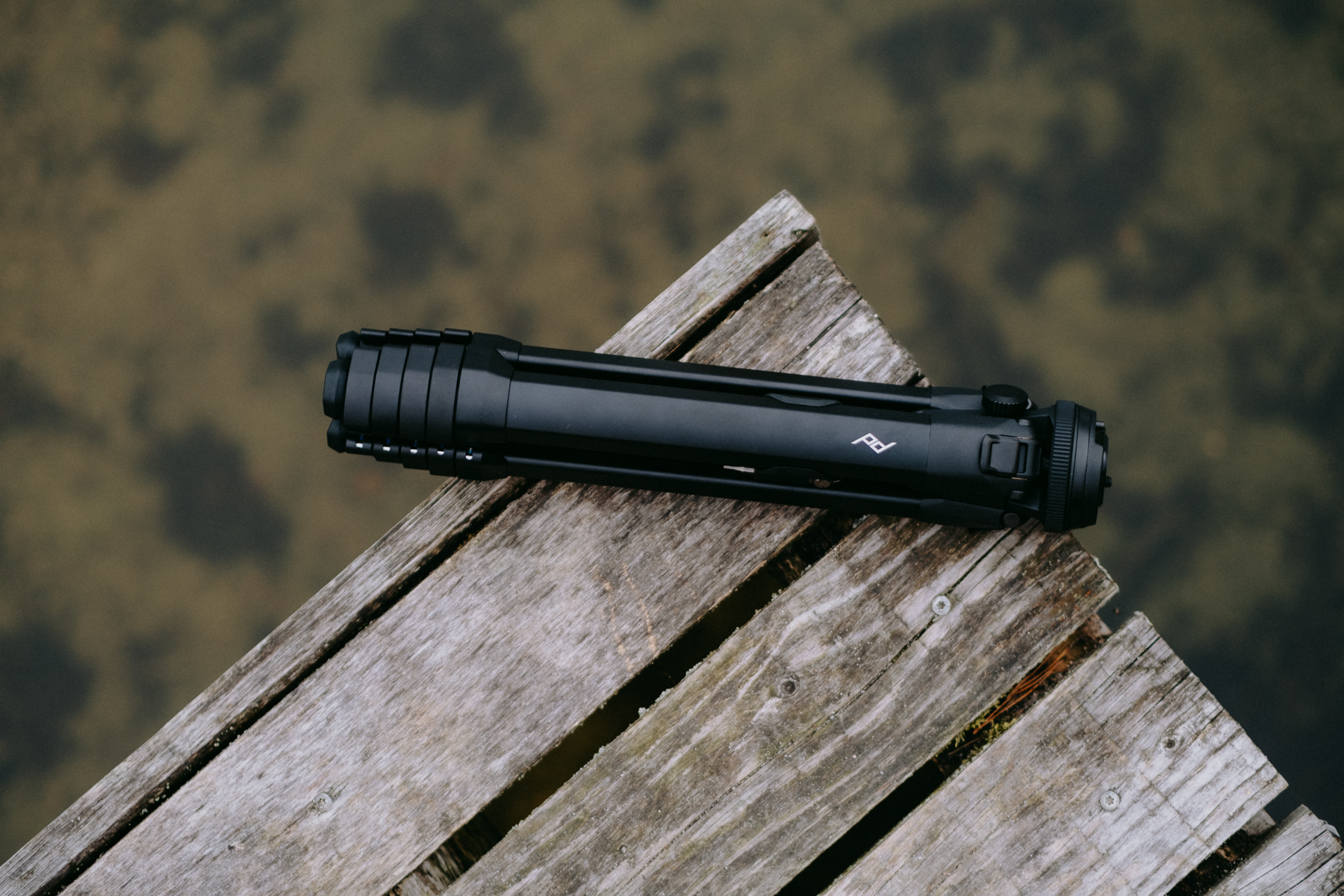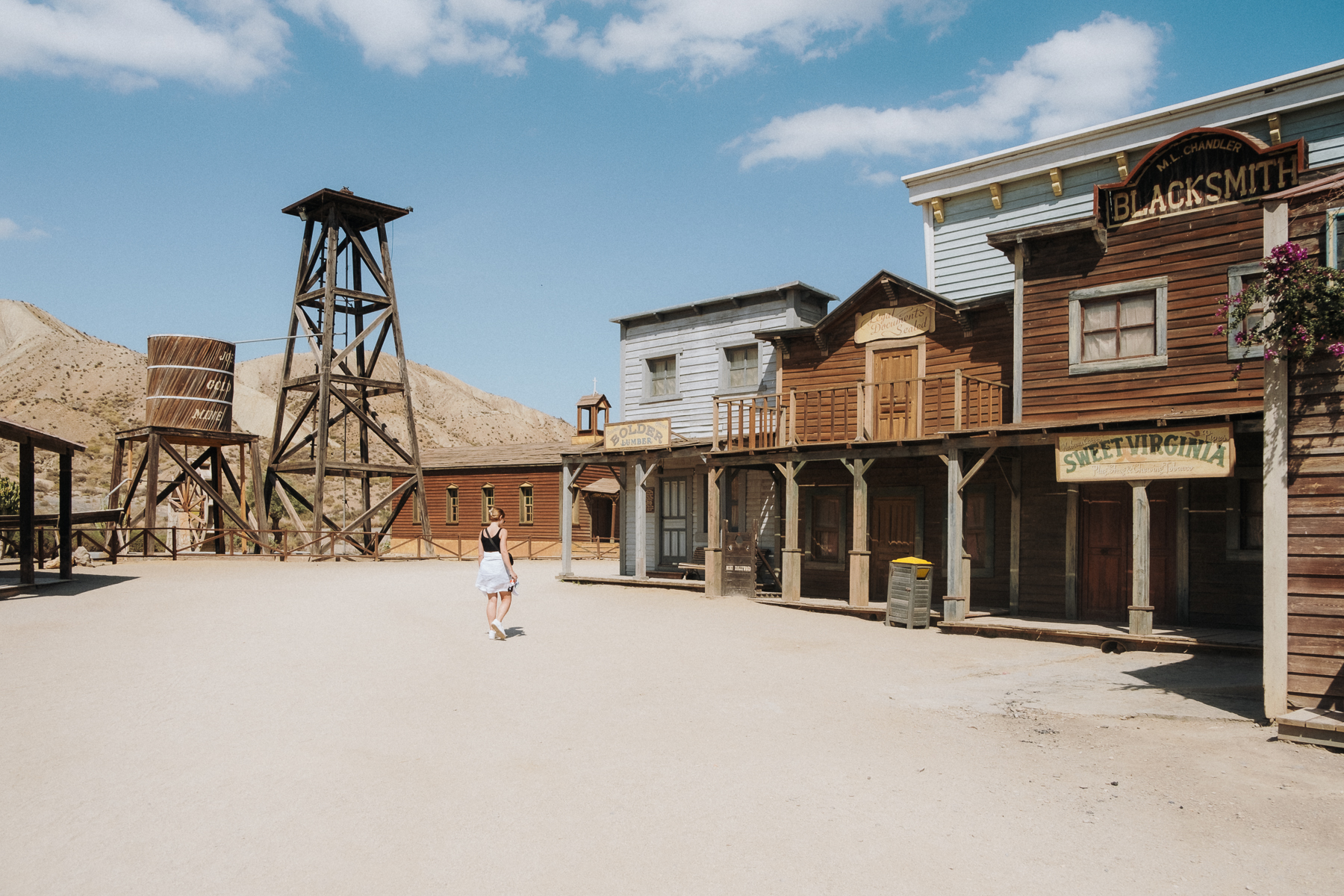During the unprecedented times of the pandemic, the roof-top tent emerged as a highly sought-after and captivating accommodation option. The allure of this innovative concept lies in its ability to seamlessly blend adventure and comfort. With a well-prepared vehicle, we embark on a thrilling journey, seeking out pristine camping locations in the untamed wilderness. Within minutes, we effortlessly erect our rooftop sanctuary, granting us the liberating sensation of absolute freedom. Captivating, isn’t it? In this enlightening post, we cordially invite you to explore our profound musings on the wonders of roof-top tents.
How it all began
Embarking on our journey, it’s challenging to pinpoint exactly when our passion for adventure took hold. It was undoubtedly well before the pandemic, during those transformative days when we began customizing our trusty Suzuki, gradually immersing ourselves in the captivating realm of off-road tourism. Our explorations spanned far and wide, captivating our souls with the allure of foreign lands like the United States, Australia, South Africa, and the enchanting countries of Central Europe.
It was in Italy, six decades ago, that the foundations were laid for the inception of mass-produced roof tents. The legendary “Maggiolina” and “Air-Camping” brands left an indelible mark on the industry, igniting our fascination. Acknowledging the profound influence wielded by social media pioneers, particularly those hailing from beyond the borders of Poland, we found ourselves irresistibly drawn to the concept. But does it truly live up to the hype? Is the acquisition of a roof tent a worthy investment? As with many things, the answer lies in the enigmatic realm of “it depends.” This complex topic hinges upon our individual expectations, prior experiences, available resources, and budgetary considerations.
Our extraordinary journey commenced when we forged a partnership with Front Runner Outfitters, setting the stage for a remarkable collaboration. Armed with a preexisting roof rack and an unwavering dedication to continuous car modifications, the choice was self-evident: Front Runner Feather-Lite. This particular model tantalized us on numerous fronts. Offering an enticingly affordable price point, it boasts an exceptional lightweight construction and holds the distinction of being the market’s lowest-profile tent, complete with a supple cover. For an in-depth exploration of our chosen tent, we invite you to peruse the dedicated entry found here.
In our maiden season, the roof tent was a novelty, a world yet to be fully grasped. Each expedition presented us with exhilarating challenges, as we acquaint ourselves with the intricacies of roof tent usage. Where should it be positioned and in what orientation? How can we swiftly assemble and disassemble it? How best to navigate the capricious whims of varying weather conditions? These were the queries that beckoned us toward a profound understanding.
In the vibrant year of 2021, we had the pleasure of embarking on an awe-inspiring journey spanning over 5,000 kilometers during our captivating expedition to Albania. Our intrepid spirit led us to explore a mesmerizing tapestry of destinations, including the enchanting lands of Croatia, Bosnia and Herzegovina, Montenegro, and the crown jewel of our adventure, Albania itself. Throughout our odyssey, our faithful companion and home for the nights was none other than our beloved roof tent, perched atop our trusty Grand Vitara.
Roof-top tent vs. nature elements
When it comes to the perpetual battle between roof-top tents and the unpredictable forces of nature, weather emerges as the ultimate adversary. Throughout our immersive two-year journey with our cherished roof-top tent, we encountered an array of captivating scenarios intricately intertwined with the whims of Mother Nature herself.
Wind
Allow me to recount a riveting incident that unfolded during our sojourn at a coastal campsite nestled along Croatia’s idyllic Adriatic shores—an ideal locale that beckoned with the promise of tranquility. As the sun cast its golden glow upon the horizon and the evening breeze gently caressed our skin, we found ourselves immersed in a state of pure serenity. However, fate had a different plan in store for us.
In passing, a gracious Polish couple issued a word of caution, foretelling the potential tempest that could ensue as night descended upon us. Yet, buoyed by our previous encounters with mild gusts, we dismissed their warning, perhaps too confident in our ability to weather the storm. Little did we know, the night would unfold with a tumultuous symphony orchestrated by the elements.
Awakening in the wee hours of darkness, our senses were immediately assaulted by the cacophony of flapping fabric carried upon the howling winds. The relentless assault proved unbearable, compelling us to seek refuge within the confines of our car’s front seats. As we abandoned our tent to the mercy of the gale, a formidable gust conspired to dismantle its delicate structure, leaving us to bear witness to the unforgiving power of nature—a harrowing experience etched forever in our memories.
So, how does one navigate such formidable challenges? The first line of defense lies in maintaining a vigilant analysis of weather conditions, and constantly monitoring updates through the convenience of smartphone applications. Another invaluable tip is to exercise discernment when selecting our overnight abode. Whether ensconced in the tranquility of an established camping site or venturing into the untamed wilderness, it behooves us to step out of the car and gauge the strength of the wind, the surrounding foliage, and the potential implications these factors may have on our night’s repose. By carefully assessing these elements, we can forge a path toward a more serene and secure slumber.
For those seeking an alternative haven, there exists a solution in the form of a roof-top tent adorned with a sturdy, angled hard shell—an ingenious feature commonly found in the revered realm of hard-shell roof-top tents. Alas, it is worth noting that such rugged fortresses often bear a heftier price tag, exceeding the cost of their soft-shell counterparts twofold or more.
As we continue to navigate the labyrinthine world of rooftop tents, we find solace in the knowledge that each experience— be it a lesson learned or a breathtaking vista—fuels our insatiable thirst for exploration. While the elements may prove to be formidable adversaries, their unpredictable nature merely reinforces the inherent beauty and complexity that accompanies a life lived on the road.
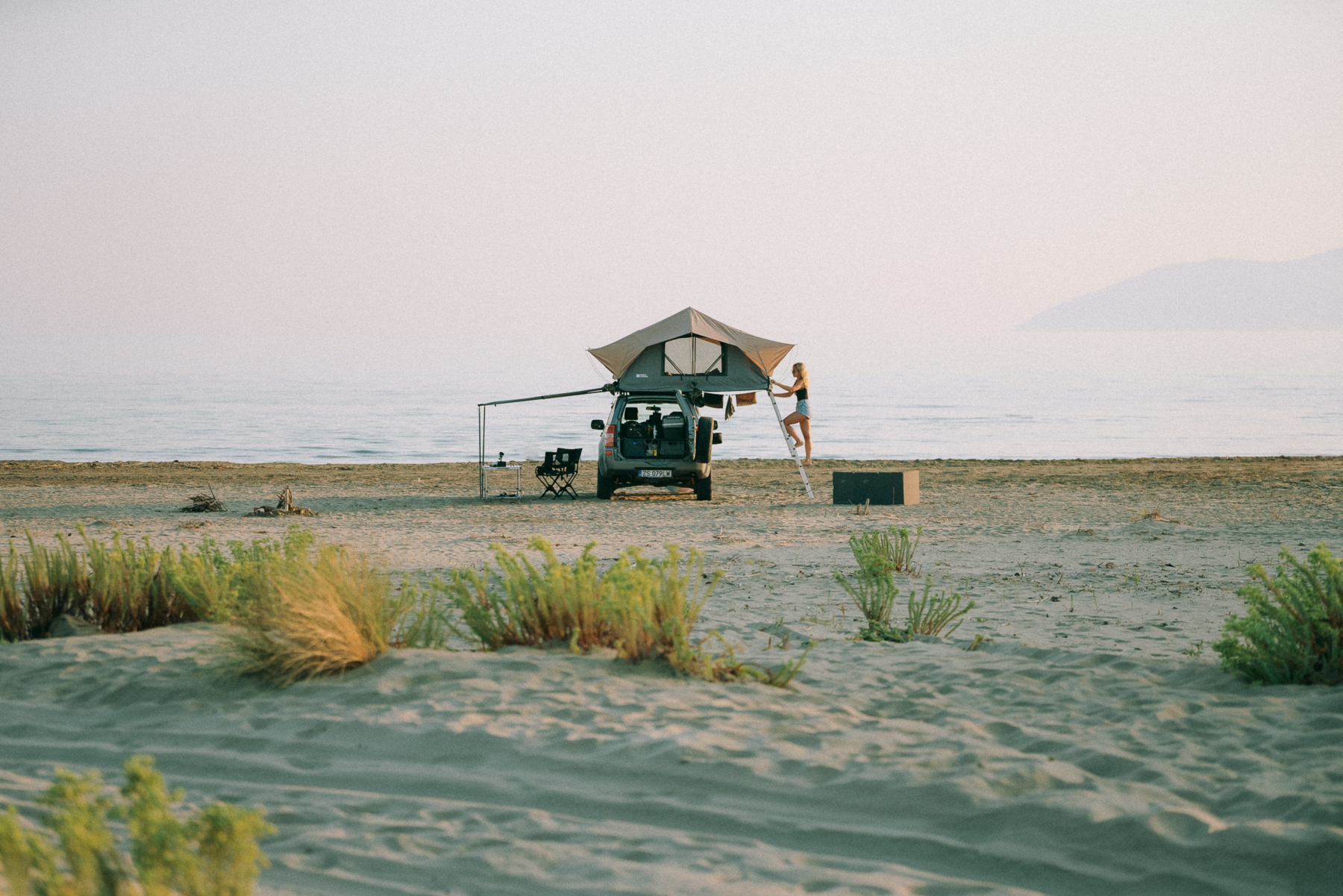
Sun
The scorching sun, a formidable contender in the realm of roof-top tent battles, commands our attention. Its radiance cast a searing influence on our recent expedition through the resplendent Balkan region. As our tires spun on the sweltering asphalt, with temperatures soaring above 30 degrees Celsius, the late-setting sun became an omnipresent force, impacting the temperature within our roof-top with surprising intensity. Arriving at our designated haven, we yearned to swiftly set up camp. Alas, the soaring heat posed an unforeseen challenge, transforming our tent into an unwelcome sauna, and robbing us of the comfort we so eagerly sought.
Furthermore, prolonged stays in a single location under the relentless sun transformed our once-cool retreat into an inhospitable furnace, rendering it unusable for the entirety of the day. While the notion of seeking solace under the sheltering canopy of a tree initially seemed promising, our experiences bore witness to a less-than-ideal outcome. The tree’s resinous secretions wreaked havoc on the tent’s outer layer, leaving behind a trail of damage and disappointment.
In light of these trials, we find ourselves acknowledging the merits of a ground-dwelling, classic tent. Transported within the confines of the car, it avoids the perils of swift heating and remains impervious to the sun’s relentless gaze. By positioning it in the shade of our vehicle or beneath the welcoming embrace of an awning, we unlock the potential for day-long utilization, ensuring a respite from the sweltering heat. Yet, as with any choice, even the classic tent bears its own set of drawbacks, such as the reliance on suitable terrain—a topic we shall delve into on another occasion.
As we traverse the intricate landscape of camping accommodation, we remain steadfast in our pursuit of finding the perfect balance between comfort, adaptability, and the capricious whims of nature. Each journey unveils a wealth of lessons and insights, guiding us towards a more profound understanding of the multifaceted world that lies beyond our windows.
Structure of a Roof-top tent
Transparency is of utmost importance to us, and we openly acknowledge that price played a pivotal role in our decision to opt for a soft-shell roof-top tent. Our chosen tent is composed of two sturdy floor plates that elegantly fold together, enveloped by a lightweight yet robust metal structure. A comfortable mattress, accompanied by an inner layer boasting windows, ensures a serene slumber, while an outer waterproof layer shields us from the capricious whims of the elements. A ladder and a sheet complete the ensemble, providing the essential finishing touches. In essence, our tent embodies simplicity and functionality—the very essence of its appeal.
It is important to note that the cost of a roof-top tent is intricately linked to the quality of materials employed and the sophistication of its opening mechanism. This dichotomy gives rise to a significant disparity in pricing. While some roof-top tents can be procured for less than a thousand euros, more premium options command a price tag that far surpasses this benchmark, often reaching several times its value.
By embracing a soft-shell roof-top tent that strikes a harmonious balance between affordability and practicality, we can embark on our adventures without compromising our financial well-being. The realization that exceptional experiences need not be accompanied by exorbitant costs serves as a constant reminder of the enduring allure and accessibility of the roof-top tent lifestyle.
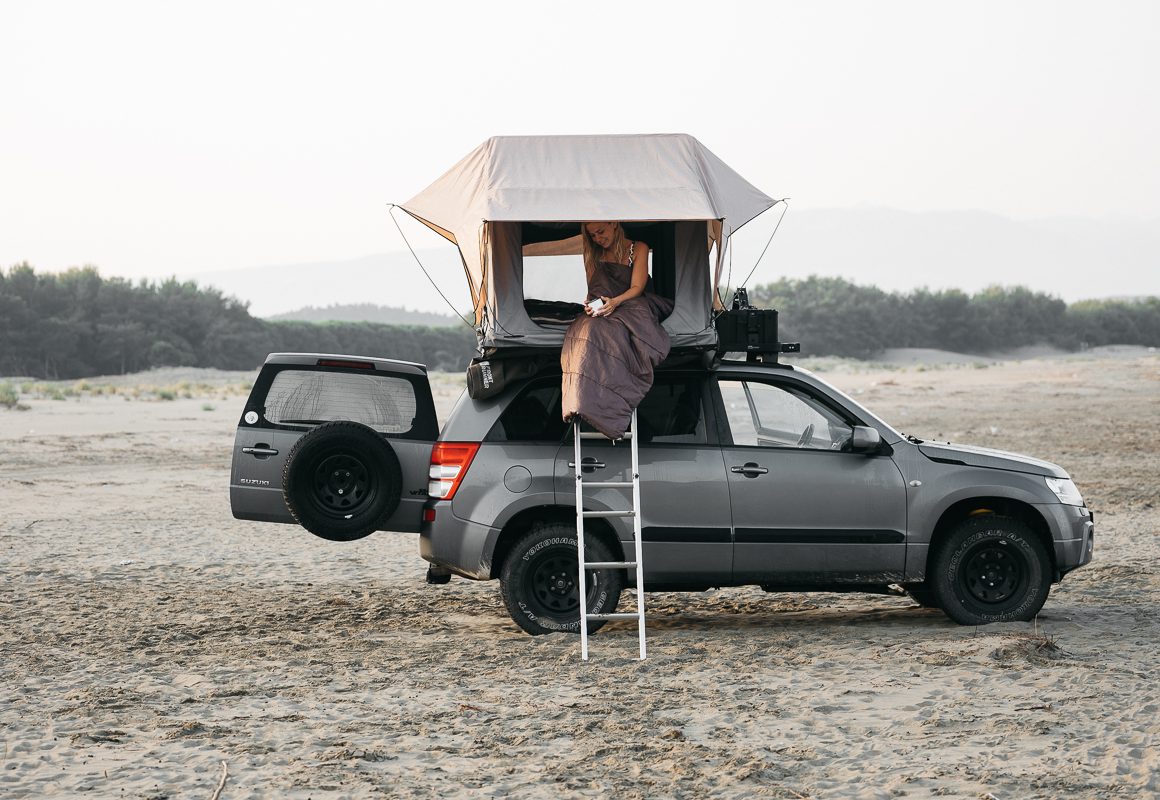
So what next?
After meticulously recounting our myriad experiences, we find ourselves presented with three distinct alternatives, each beckoning us with its own unique allure.
The first option materializes as a result of our yearning to embark on grander adventures, necessitating the acquisition of a larger vehicle. Naturally, our thoughts gravitate towards the possibility of slumbering within the confines of our newfound automotive haven. This solution, contingent upon securing a car with ample dimensions, emerges as the epitome of convenience and frugality, offering a seamless transition without incurring additional costs.
The second path reveals itself in the form of a resplendent new roof-top tent. Captivated by its allure, we unhesitatingly opt for a hard case variant, replete with advanced actuators that facilitate effortless opening. A cleverly sloped roof on one side, coupled with an abundance of interior space to comfortably accommodate our cherished sleeping bags and pillows, stands as a testament to our dedication to elevating our camping experience to unprecedented heights.
The third option, while undeniably the most financially substantial, appears to manifest as a veritable embodiment of perfection. Envisioned within this realm is the tantalizing prospect of a lifting roof, adorning our vehicle with an expanse of newfound space. In the eventuality of inclement weather, we are bestowed with the luxury of utilizing this interior haven, effortlessly adaptable to cater to our every whim and need.
Roof-top tent - tips for you
When embarking on the quest for the perfect rooftop tent, it is crucial to ponder upon a myriad of significant factors. To illuminate your path and ease the weight of this momentous decision, we humbly present to you a curated list of invaluable tips, designed to empower your journey towards acquiring the ideal roof tent:
- Define Your Needs: Begin by introspecting and identifying your unique requirements. Consider factors such as the number of occupants, desired comfort level, storage capacity, and the type of terrain you plan to traverse. This self-reflection will serve as the bedrock upon which your selection process shall thrive.
- Research Thoroughly: Arm yourself with knowledge by delving into the realm of roof-top tents. Engage in comprehensive research, peruse online forums, read reviews, and immerse yourself in the wisdom shared by seasoned adventurers. Harness this treasure trove of information to gain insights into different brands, models, and their performance in varying conditions.
- Assess Quality and Durability: Prioritize the longevity and sturdiness of the roof tent. Examine the materials, craftsmanship, and design integrity. Seek reputable manufacturers renowned for their commitment to exceptional quality, ensuring that your investment endures the test of time and remains resilient in the face of unpredictable elements.
- Consider Ease of Use: Embrace the convenience of a roof tent that is effortless to set up and dismantle. Evaluate the deployment mechanism, the speed of assembly, and the intuitiveness of the process. Opt for user-friendly features that allow you to maximize your time relishing the beauty of nature rather than grappling with complex installation procedures.
- Size and Compatibility: Carefully measure the dimensions of your vehicle’s roof and match it with the appropriate tent size. Ensure compatibility and compatibility, avoiding any unpleasant surprises upon arrival. A harmonious union between the roof tent and your vehicle will provide seamless integration, facilitating a comfortable and secure shelter.
- Weather Resistance: Account for the whims of Mother Nature by prioritizing weather resistance features. Seek a roof tent equipped with robust waterproofing, sturdy zippers, and reinforced seams to safeguard against rain, wind, and other elements. Embrace the tranquility that arises from knowing you are well-protected in your elevated sanctuary.
- Comfort and Amenities: Envision the ultimate haven, one that pampers you with a plush mattress, ample headroom, and well-ventilated spaces. Explore the inclusion of additional features such as windows, skylights, and storage pockets that enhance your camping experience, providing a cozy retreat amidst the wilderness.
- Budget Considerations: Establish a realistic budget range that aligns with your financial capacity. While seeking the best value for your investment, remember to strike a balance between affordability and the quality that fulfills your desired criteria. Delve into the options available within your designated budget, discovering the perfect equilibrium between cost and benefit.
- Seek Recommendations: Tap into the wealth of knowledge possessed by fellow adventurers and trusted experts. Seek recommendations from seasoned explorers who have traversed similar paths. Their insights, born from experience, can illuminate hidden gems and steer you away from potential pitfalls, guiding you towards the roof tent that resonates most profoundly with your aspirations.
- Trust Your Instincts: Ultimately, listen to the whispers of your heart. After meticulous consideration and careful analysis, trust your instincts to guide you towards the roof tent that feels like an extension of your adventurous spirit. Embrace the excitement of embarking on a journey with a companion that echoes your desires and fuels your wanderlust.
*affiliate link

